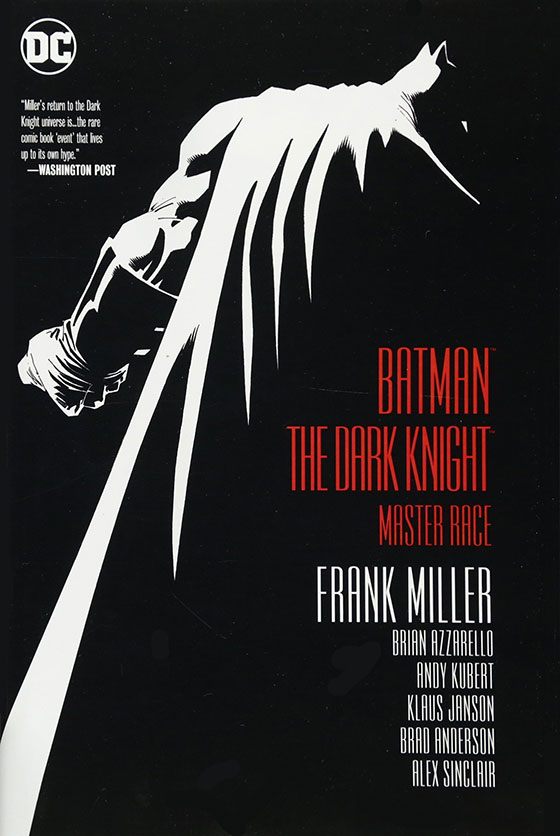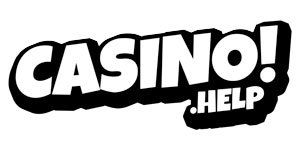‘Batman The Dark Night: Master Race’ Graphic Novel Review
Written by Frank Miller, Brian Azzarello | Art by Frank Miller, Andy Kubert, Klaus Jansen, Brad Anderson | Published by DC Comics | Distributed by Penguin Random House

The ideas behind Batman The Dark Knight: The Master Race are huge in scope, touching on race, religion, society, etc. There’s a reason this collected book is called “Master Race” – to remind us, bluntly, of the themes in this third entry into Frank Miller’s Batman: The Dark Knight trilogy touches upon. It may seem heavy-handed to call this collection that – but it works to succinctly tell the audience what to expect from this story, as in a villain, Quar, who is a maniacal madman, hellbent on shaping the world in his twisted image – a la a myriad of dictators and war criminals – calling humans “ants”, chastising them for ruining the planet, calling for genocide on a global scale by zealots (more of the titular “master race”) who would, literally, die for HIS beliefs.
But at the same time, aren’t our heroes, Superman, Green Lantern, Wonder Woman, etc. also a “master race,” playing with the lives of humans each and every day, when the choose to, or not to, help a society in need. And he it’s very apparent that Miller thinks of those super-powered heroes in such a manner. He has Wonder Woman back in Themyscira and Superman trapped in ice (by own hand) in his Fortress of Solitude – not so much spending time away from humanity; but more of turning their back on people who, following the events of the previous TDK series, no longer want – or seemingly need – heroes.
The there’s Ray Palmer, aka The Atom. A scientist AND hero, filled which such hubris that he feels he can be the only one to save the citizens of bottle city of Kandor – which leads to the disaster that befalls the Earth and – eventually – the return of the Justice League. Is that the actions of someone who thinks he’s on a par with humans or superheroes? Or someone who thinks he is part of a “master race,|” above the morality of humanity, someone who can only be tempered by other super-powered heroes.
Of course in the midst of this there’s our hero. Batman. The Dark Knight. An ageing vigilante who has seen it all and paid for his heroism with the life. Literally. A broken man, Bruce Wayne now relies on Carrie Kelley to carry the mantle; the former Robin now turned Dark Knight bringing back Batman’s vigilantism with a vengeance. The relationship between Carrie and Bruce moving from teacher and student to something more akin to that of father and daughter. It’s a relationship that grounds Batman The Dark Knight: The Master Race emotionally and provides the real heart of this book. It’s fascinating to see the duo learning from each other – Batman teaches Carrie the ins and outs of being a hero; whilst Carrie teaches Bruce how to be human: opening him up to the idea of being part a family again, about learning to care more for than just himself. Bring light to the darkness of being the Bat…
But then Miller goes and spoils it all by be controversial for controversy’s sake – Nazi tits anyone?
Miller’s artwork doesn’t help sell this books amazing story either. The books collected within Batman The Dark Knight: The Master Race that are drawn and inked by Miller look, frankly, awful. Characters look malformed; men, women, monsters – all look the same. It’s certainly not the Frank Miller artwork many will remember. Thankfully those solo works are few and far between, instead Miller’s art is toned down (some might say “corrected”) by inker Klaus Janson, who smehow manages to take the deformed visuals of Miller’s pencils and at least make them look somewhat human.
But then that might be the case – did Miller want his “supermen” to look like the everyday man in the street? Could it be that Miller wanted to call out the concept of “good-looking hero”? After all the heroes of the Justice League that feature in this book have, over the years taken a beating, their bodies ravaged by war, by being merely more than mortal… Or am I just trying to justify less than stellar artwork?
Thankfully whilst the art may be lacking, the story of Batman The Dark Knight: The Master Race certainly isn’t. Frank Miller and his co-writer Brian Azzarello have crafted a story that not only returns heroism to superhero books, but restores faith in the characters within this tale.
Batman, thanks to Carrie, becomes less of the hate-filled hero he was and more of the Dark “Knight” the world needs. Wonder Woman has *never* been more badass; Superman more super (and more human); and Green Lantern… Well this Hal Jordan becomes the shining beacon of light in a dark world that he should have always been: sans fear, sans worries, etc. Meanwhile Superman and Wonder Woman’s child, Lara, has her own emotional journey – a growth that the character really needed to solidify her as more than the confused half-Amazon/half-Kryptonian she was seemingly set to be in this universe – one that sees her finally living up to the moniker of Supergirl, discovering (in the books closing) what it means to be the daughter of Superman.
Feeling very much like a true “superhero” tale, this is packed with more heart, more emotion, more heroism (flawed or otherwise) and, more importantly, a story that feels like it’s moving superhero storytelling forward whilst paying homage to the more simplistic early era of superhero comics; this is a HUGE step up from the previous Dark Knight book. And whilst it’s certainly not set to have as big an impact as the original The Dark Knight Returns, Batman The Dark Knight: The Master Race, should it ever come to this, would make a fantastic cinematic chapter in the story of the DCEU Justice League.
Batman The Dark Knight: The Master Race is out now.











































